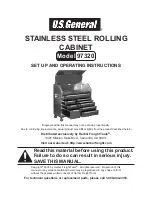
Chapter 5: Subsystem Maintenance and Upgrading
Replacing
a Faulty BBU
5-9
socket. The ejector tabs on each end of the socket will snap
into proper positions. (See
Figure 5-7
)
Figure 5-7: Installing a DIMM Module
Step 5.
Install the controller module and BBU module
back in its
original locations. (See
Section 5.2.3
)
5.4 Replacing a Faulty BBU
The subsystem comes standard with two (2) BBUs. The BBU can sustain
cache memory in the event of a power failure or in the extremely unlikely
event of failing both PSUs. The BBU provides additional data security and
helps minimize the chance of losing data during power outages.
Each BBU contains battery cells mounted on a metal bracket, and connects
to an adaptor board within the RAID controller. The BBU is secured to the
RAID controller at the top center of the faceplate using two (2) retention
screws. If a BBU fails, it should be replaced as soon as possible. Please refer
to
Section 2.8.1
before replacing it.
Fault Conditions:
A BBU failure can result from the following:
1.
A BBU has lost its ability to hold electrical charge. This may be
the case after the battery cells have been recharged for many
times regardless of how long the module has been used.
Therefore, a stable power source is important for system
operation.
2.
The charger circuitry implemented within the controller has
failed.
There are other conditions that might trigger the BBU fault events and
















































